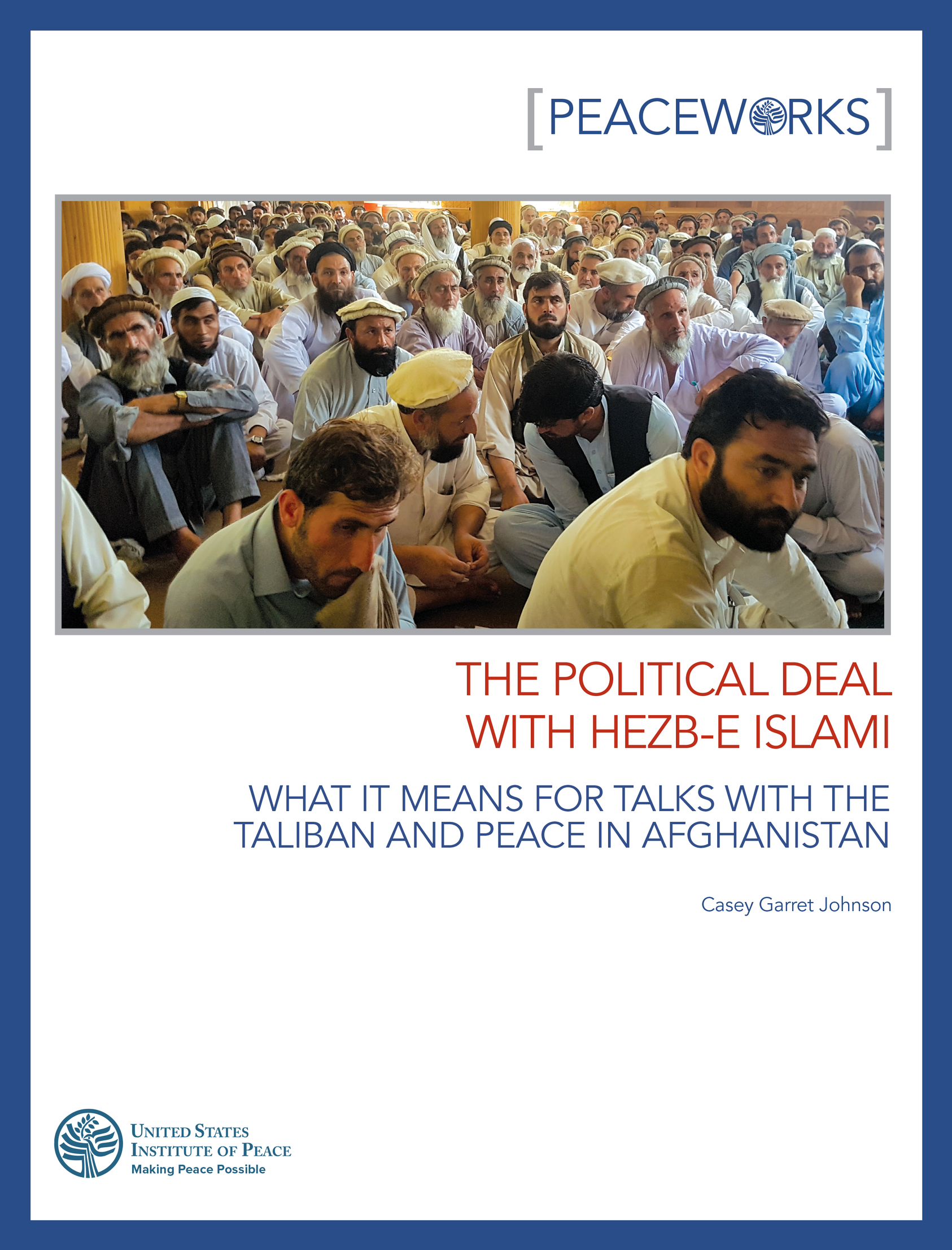What It Means for Talks with the Taliban and Peace in Afghanistan
The deal signed with Hezb-e Islami in September 2016 was the Afghanistan government’s first major success at negotiating a peace agreement with an insurgent group. In return for Hezb’s renunciation of violence, the government promised to free Hezb prisoners, incorporate former insurgents into the security services, and resettle thousands of Afghan refugees living in Hezb-affiliated camps inside Pakistan. Most prominently, the agreement paved the way for Hezb-e Islami leader Gulbuddin Hekmatyar to return to Kabul after twenty years in exile. This new report examines how the deal was negotiated, what progress has been made on its implementation, and what lessons can be applied to prospective peace talks with the Taliban.
Summary
- General support for the agreement between Hezb-e Islami and Afghanistan’s National Unity Government, finalized with the return of Gulbuddin Hekmatyar in May 2017, is due to a widespread perception that, despite its limitations, it is an “Afghan deal.”
- Though it remains to be seen if the deal will have a demonstration effect on the Taliban, it has at least demonstrated to the Afghan public that its government is capable of concluding a political agreement with a militant group.
- Rather than engaging in outright opposition to the deal, traditional rivals like Jamiat-e Islami and other entrenched elites are trying to prevent Hezb-e Islami from unifying politically and to slow down the implementation of provisions of the agreement, particularly the incorporation of Hezb-e Islami cadres into various arms of the Afghan National Security Forces.
- At the national level, there is an expectation among Hezb-e Islami partisans that the agreement will translate into electoral success if and when long-delayed parliamentary elections are held. However, leadership remains divided, with one camp surrounding Abdul Hadi Arghandiwal, the head of Hezb-e Islami’s post-2001 political party, and another backing Hekmatyar and his son, Habib ur Rahman.
- National-level divisions are less apparent at the provincial level. In the provinces, there is greater agreement among Hezb-e Islami partisans that the party is unified under Hekmatyar’s leadership. Support is driven by the belief that Hekmatyar’s name recognition in specific provinces will translate into future parliamentary and provincial council seats.
- There is no evidence that Hezb-e Islami commanders have joined the Taliban, the Islamic State, or the Haqqani Network. Instead, many of the commanders opposed to the deal have chosen to remain inside Pakistan. The most significant internal opposition comes from a group of Hezb-e Islami Gulbuddin militants based in Shygal district of Kunar. These individuals are talking to, but as of late 2017 had not joined, the Taliban or the Islamic State’s “Khorasan” branch.
- The handful of provincial- and district-level Taliban commanders interviewed say the deal has not influenced their view of peace with the Afghan government. Among other things, they cited long-standing ideological and operational differences with Hezb-e Islami, mistrust of the Afghan government, and, above all, the perception that they were winning the insurgency as reasons why the deal mattered little to them.
- The extent to which the Hezb-e Islami deal offers a “blueprint” for future formal talks with the Taliban is limited by differences in scope, complexity, and dynamics. Nevertheless, the experience provides some useful insights, including the benefits of framing the process from the standpoint of a “political agreement” as opposed to reconciliation, using the High Peace Council to support rather than lead negotiations, and allowing militants to retain weapons in return for renouncing violence and ceasing attacks.
About the Report
The September 2016 agreement between Afghanistan’s National Unity Government and Hezb-e Islami called for the militant group to renounce violence and accept the Afghan constitution in return for the government freeing Hezb-e Islami prisoners, incorporating cadres into the Afghan National Security Forces, and resettling thousands of Afghan refugees living in camps inside Pakistan. This report examines how the deal was negotiated, how it has been received in the provinces beyond Kabul, what progress has been made on the implementation of specific provisions, and what lessons can be applied to prospective peace talks with the Taliban.
About the Author
Casey Garret Johnson is a researcher focusing on politics and conflict in Afghanistan.
